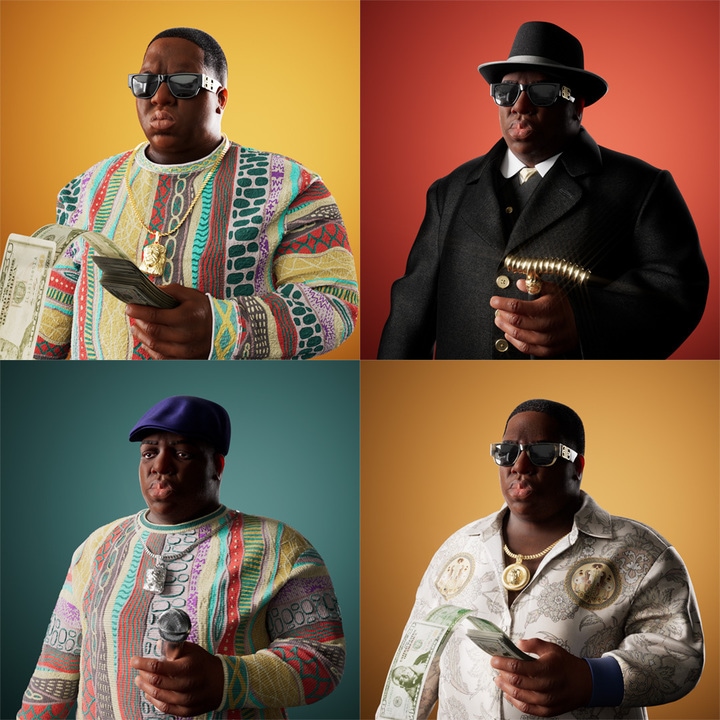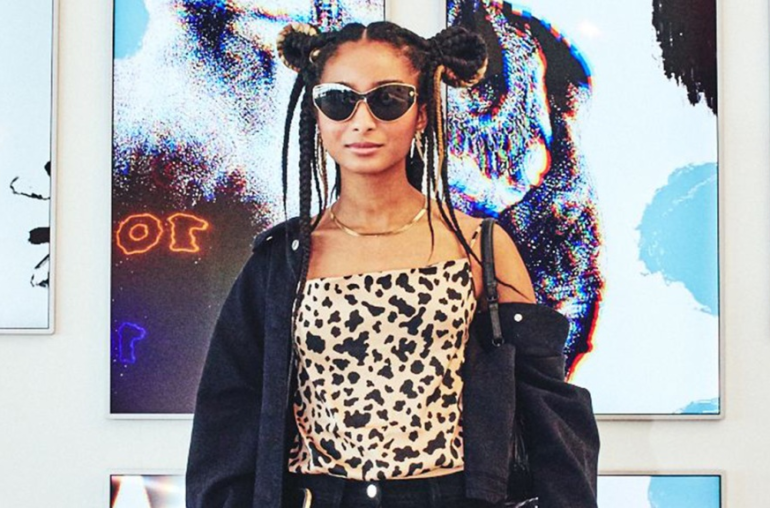Maybe you wore out both discs of “Life After Death.”
Perhaps you couldn’t get enough of Sean Combs and Lin-Manuel Miranda’s tribute at the Rock ’n Roll Hall of Fame induction.
Or you might even own several pieces of clothing with an image of that famous crown.
No matter how deep your connection to the Notorious B.I.G., the people in charge of the pioneering rapper’s estate think it can go even deeper. “Wait on a digital line to drop $100 on a piece of AI-generated art” deeper.
On Tuesday afternoon the estate made available — first to a list of fans that have demonstrated their devotion and then to the general public — a 3,000-piece NFT collection that uses algorithms to resurrect the late icon’s signature looks. The Notorious NFT is dedicated to the proposition that keeping an artist alive is not so much about holding them in your heart as retaining them in your digital wallet.
To its backers, this offers an opportunity to communicate Biggie’s essence in a way even the most raw bootleg can’t — though as with so many things web3, far from everyone will see the upside.
“This is a chance to give fans a piece of his legacy instead of just pushing the legacy on them,” said Wayne Barrow, a longtime friend of the rapper who now helps manage his estate. “It’s what makes web3 great — you can participate instead of just purchasing what somebody’s selling.”
The big poppa of the drop, Barrow said, isn’t even the digital art. It’s membership in a collective that will be empowered to decide the fate of the “Fulton Street Freestyle” — a famous bit of viral video in which a 17-year-old Christopher Wallace improvised lyrics on a Brooklyn street corner for adoring crowds.
The performance has never been licensed out. But the 3,000 NFT owners will get to vote on whether any paying entity that wants to use it as a sample or in other derivative works can do so. Members could even see some revenue from such a sale, though the details have yet to be worked out.
The drop is called “Sky’s The Limit,” a reference to Biggie’s posthumous 1997 hit about dreaming big — and a sly allusion to how far technology has come from the world of the song, in which he’s the only man around with a mobile phone.
Biggie died 25 years ago, of course, gunned down after an industry party in Los Angeles in the wake of a coastal-rap feud with Tupac Shakur, who was killed months earlier. The posthumous celebration — and market economy — kicked off almost immediately, with the “Life After Death” release going diamond (10 million copies).
It has barely slowed since, powering along with such events as a record $600,000 sale of that famous crown several years ago. To mark what would have been his 50th birthday this year, the Empire State Building lit up in Biggie colors while Combs’ record label released a deluxe box set of “Life After Death.”
But no commercialization seduces like a web3 commercialization. Barrow, entrepreneur Elliot Osagie and Biggie’s mother Voletta Wallace a little while ago got together with OneOf, an NFT company co-founded by Quincy Jones that previously auctioned off an NFT of an unreleased Whitney Houston demo track.
For this, OneOf chose from a series of Biggie’s famous looks and adapted them for the NFT. It is a “generative drop,” which means an AI takes a handful of templates and makes small differences to spit out unique images — changing a background color, for example. There is no artist per se — organizers worked with the animation company Seriously Fun.
To determine who gets first crack, a two-hour presale “allow list” was put together from fans who submitted testaments to their devotion. Backers say they wanted to avoid too many speculators who will later drive the price up, but acknowledge that this is almost inevitable (and perhaps desirable).
Biggie was known for his deep-voiced, laid-back rapping style that recounted his struggles, glorified his aspirations and reveled in his successes (and excesses). His music was a comment on class, crime, wealth, death and other topics that had not previously been rapped about in that way, one reason he was named the greatest rapper of all time by the Source, among many others.
Organizers say that even simple images, like Biggie holding a bag of cash, come with commentary befitting his music.
“Every single item has a story and it’s often not the story people understand,” said Christopher Sealey, OneOf’s creative director. “We have one with Biggie holding a bag of cash, and the reason we included it is not because he was talking about money but because if you talk to his neighbors even now, then they’ll all say how generous he was in the community.”
Voletta Wallace called the NFT a chance “to memorialize my son Christopher.” It will give fans “an opportunity to participate in and honor their love of him and his music,” she said in an earlier statement.
OneOf’s Whitney Houston demo sold for nearly $1 million to a single buyer. Grimes also sold a collection for nearly $6 million, only to see it later plunge in value. At $100 a pop, this will generate $300,000 — less money and, maybe, less problems.
Not that all musician NFT’s take off right away. Embattled singer Chris Brown saw just 3 percent of his collection sold a week after release last month. But Tuesday evening, Sealey said that the general-public allotment of Biggie’s NFT sold out within 10 minutes.
The NFT release is related to an effort called “the Brook,” a Biggie “metaverse” in which people can assume avatars and move around the world conjured by his songs. It might strike users as either the future or a new participatory storytelling — or a kind of brand overkill that erodes what made so many people fall in love with an artist in the first place.
The principals, at least, say it fits the rapper perfectly.
“When I think of Biggie, I think of a man sitting in his home looking out the window, giving you a purview of what he saw,” Barrow said. “He was connecting you to the story by putting himself there but he was also bringing you in it. So in Biggie’s mind, the metaverse already existed.”
But what about the speculative bubble inherent to NFTs. Is this a unique tribute? Or just a code-heavy way to mint more money?
Sealey said he believes the Biggie drop shows a way forward and keeps true to hip-hop’s roots. “The entire essence of hip-hop is remixing culture,” he said. “We’re giving fans creative control over the most famous freestyle of all time.”
Tech tools like digital watermarking, AI art and the uniting ethos of the blockchain, he said, goes well beyond re-releasing albums to remaking an artist’s work in the present tense.
“This isn’t a posthumous drop,” Sealey said. “It brings everything to the here and now.”


